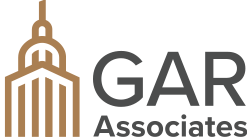
State legislators are taking another shot at closing a tax loophole that developers in Syracuse and elsewhere have used to avoid paying millions in property taxes.
The Assembly on Thursday passed legislation that would add strict new rules for a tax break intended to spur the reuse of old commercial buildings.
Similar legislation in 2019 died in the Senate. Assembly sponsor William Magnarelli, D-Syracuse, said he hopes to work with Senate backers this year to get it passed.
Syracuse.com reported that some developers have claimed the 485-a tax exemption for projects that defied the spirit of the law. Examples included razing old buildings to put up new ones or claiming that vending machines in an apartment building are a “commercial use.’’
Magnarelli cited those examples in his news release announcing passage of the Assembly bill. In an interview, he said the tax break has been abused in Syracuse, Buffalo and elsewhere.
“I think 485-a has been misused,’’ Magnarelli said. “They were literally tearing down buildings, and adding onto buildings, and then just grabbing the credit because they kept part of them up. That’s not what this was for.’’
His bill would add specific requirements for projects to qualify for the 485-a exemption, which is among the most lucrative tax breaks available. The new provisions include:
– At least 50% of the renovated building must be residential space.
— At least 15% of the building must be commercial space.
— At least 75% of the floor space in the renovated building must be from a pre-existing structure.
— The exemption cannot apply to structures built on vacant land.
— Building owners must certify compliance annually and can have their benefits revoked if they no longer meet the criteria.
The 485-a tax break is available only in municipalities that adopt it. The city of Syracuse, which allowed the exemption in 2010, amended the law in December to say the tax break should be “narrowly construed.’’ City officials stopped short of adding specific criteria, which they said exceeds the city’s authority, but asked Magnarelli and other state legislators to do so in state law.
Magnarelli said he anticipates meeting with Sen. Neil Breslin, D-Albany, who sponsored companion legislation last year, to discuss possible tweaks if necessary. Sen. Rachel May, D-Syracuse, is a co-sponsor.
The 485-a exemption was intended to subsidize the renovation of existing, under-used commercial buildings by converting them to a mix of residential and commercial space. Syracuse officials say the generous tax break has been a critical ingredient in the restoration of important downtown landmarks such as the State Tower Building and the Pike Block.
But the largest exemptions in Syracuse have gone to a different type of project: brand-new buildings that replaced older structures that were demolished. Four such buildings constructed since 2016 – all luxury student apartment buildings on University Hill — save a total of roughly $4 million a year from 485-a exemptions.
In another case, the developer of a sprawling Syracuse apartment complex told city officials that several vending machines in the lobby qualified as the project’s commercial use, city officials said last year. After assessor David Clifford refused to accept that, the complex added a small retail space, Clifford said. A beauty salon currently occupies the space.
Published by Syracuse.com





